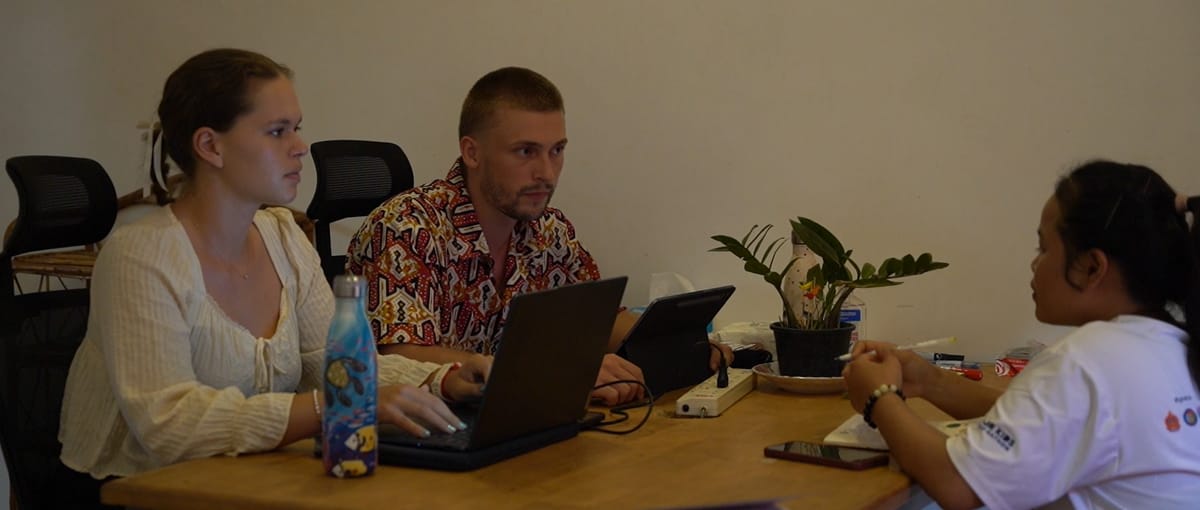Behind the Scenes of School Reform
We had to let some students go who did not meet the organization's criteria. Once the emotion subsided, and everyone understood, we shifted into gear.

“You can’t calm the storm, so stop trying. What you can do is calm yourself. The storm will pass.”
— Timber Hawkeye
On the third day back in Cambodia, we saw our friend and neighbor Grant for what felt like a fleeting ten minutes, barely enough time for a real conversation. We sipped a quick coffee in the kitchen of his villa and listened to his bad experience in a taxi in the UK on his way to the airport. He just got back from a family visit in London. The world outside felt quiet and slow, while our schedules roared ahead without pause.
We rushed from that brief catch-up straight into back-to-back meetings at the school. The first was a full staff meeting in the open-air classroom. Fans buzzed in the background as we laid out the vision and expectations for the new school year, now shaped by the difficult decisions and new regulations implemented only days before. Some faces looked tired, others thoughtful—everyone knew it was a critical time.
The second meeting, held inside the Staff room, was more intimate—just us and the caregivers. It was emotionally charged. They recounted the last few days, which included worried phone calls from parents, direct confrontations, and even accusations. Their voices, usually calm and measured, held frustration, concern, and the weight of empathy. They were close to the students and their families—too close not to feel the fallout.
Immediately afterward, we dialed in for a Zoom call with one of our founders. In the Staff room, surrounded by whiteboards scribbled with notes and plans, and lesson materials. We updated him on everything: the tension in the villages, the misunderstandings, the risk to the trust we had built. Together, we brainstormed a culturally sensitive plan to rebuild relations. Cambodian society, as we were learning firsthand, is deeply hierarchical. The appropriate path was clear: we needed to reach out directly to the village chief and the commune chief.
So we sat down under the whir of the ceiling fan and carefully drafted formal Khmer letters, translated with the help of our staff, to explain the new enrollment criteria and our commitment to transparency. This was our first real experience navigating the labyrinthine world of rural Cambodian governance—a realm of unwritten rules, respect, and long memories.
We barely had time to catch our breath before the next appointment: an interview with a potential new teacher. We met the candidate outside the school on neutral terrain, with nerves evident in her smile. Having a pleasant conversation from pedagogy to daily life. Hoping she could be a good fit for our evolving team.
As the sun dipped lower and the air thickened with late-afternoon humidity, we finally made it to our last meeting of the day, a long-overdue conversation with the school’s cook. We found her in the kitchen, sleeves rolled up, standing over a massive pot of rice. Her face was weary. She had been cooking three meals a day for nearly a hundred students by herself. It was no surprise that the food quality had suffered.
We sat down at the small table next to her prep station and, with as much kindness and clarity as possible, discussed our expectations. Not to criticize, but to support. She deserved a team, not a mountain of impossible tasks.
By the time we wrapped up, it was late. The moon hung low over the palm trees, casting silver light across the school grounds. The day had been a marathon, but a productive one. We drafted our action plan, assigned responsibilities, and clarified expectations with our team.
That Saturday morning, backpacks slung over our shoulders, we boarded a bus bound for Thailand. The ride took us over twelve hours, weaving past rice paddies and road markets, chickens and motorbikes. But even as the countryside slipped by, we weren’t really offline. We were constantly in touch with our team in Cambodia, both on the mountain and at the boarding school. Issues with student data transfers between districts arose immediately—bureaucratic confusion that needed to be untangled.
Our “holiday” had begun, but the school followed us like a shadow.